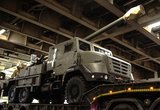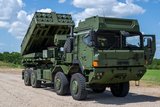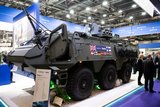US Missile Defense Agency’s budget could be cut by $2.6 billion over the next three years
The SM-3 Block IB interceptor effort will be terminated after FY2024. (Photo: US MDA)
Spending projections based on the Pentagon’s FY2025 budget proposal have shown that the Missile Defense Agency (MDA) could face a US$2.6 billion expenditure reduction from the next fiscal year through to FY2028. The cut could create capabilities gaps in US missile defence architecture over the coming years and place both US territory and its forces deployed worldwide in a risky position.
To cover MDA activities in FY2025, the Pentagon requested $10.4 billion, which was more than $400 million less the Agency’s FY2024 spending ($10.8 billion). The US Department of Defense (DoD) also projected that the agency’s expenditure would be $10.2 billion in FY2026, $10.5 billion
Already have an account? Log in
Want to keep reading this article?
More from Land Warfare
-
![Croatia orders Leopards and CAESAR howitzers as Lithuania orders more CAESARs]()
Croatia orders Leopards and CAESAR howitzers as Lithuania orders more CAESARs
The Leopard is becoming the tank of choice in central and eastern Europe as Croatia joins Lithuania, the Czech Republic and Hungary in ordering the platform. Lithuania and Croatia have also signed for CAESAR howitzers.
-
![Light Reconnaissance Strike – enabling a vital mission set (Studio)]()
Light Reconnaissance Strike – enabling a vital mission set (Studio)
A new system-of-systems concept will unlock digital integration of sensors and weapons for Light Forces, allowing them to shape the battlefield environment on their own terms and upgrade legacy platforms.
-
![Lockheed Martin to look further afield for GMARS rocket system opportunities]()
Lockheed Martin to look further afield for GMARS rocket system opportunities
The HX truck is already in use in many NATO and allied countries around the world as a logistics vehicle and carrier for high-value systems, including missile firing weapons, so its use for the Global Mobile Artillery Rocket System makes logistical sense.
-
Medium knocked out of British Army LMP, with CAVS as heavyweight champion
As the British Army seeks to modernise and consolidate its diverse vehicle fleet, yet another change in direction is underway.

























